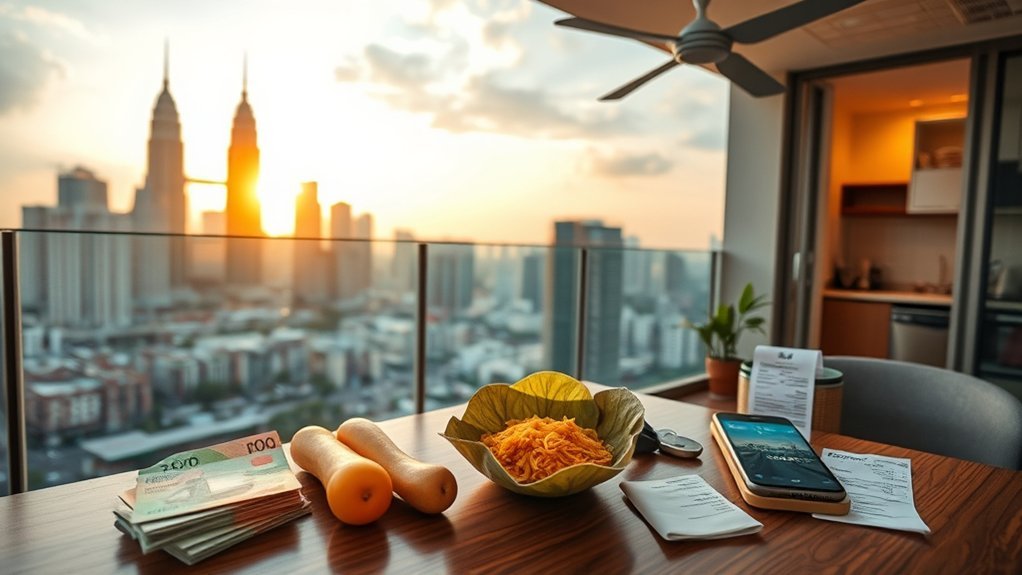You can live comfortably in Malaysia for about $1,200–$2,500 a month as a couple, with costs varying by city and lifestyle. Expect two-bedroom rents from $400 in smaller towns to $700–$1,500 in Kuala Lumpur and $800–$1,200 in Penang. Monthly groceries run $200–$400, utilities $50–$100, and public transit $20–$25. Private healthcare and insurance add $50–$150 monthly. Keep reading for a detailed, line‑item breakdown and comparisons.
Housing and Rental Costs Across Malaysia
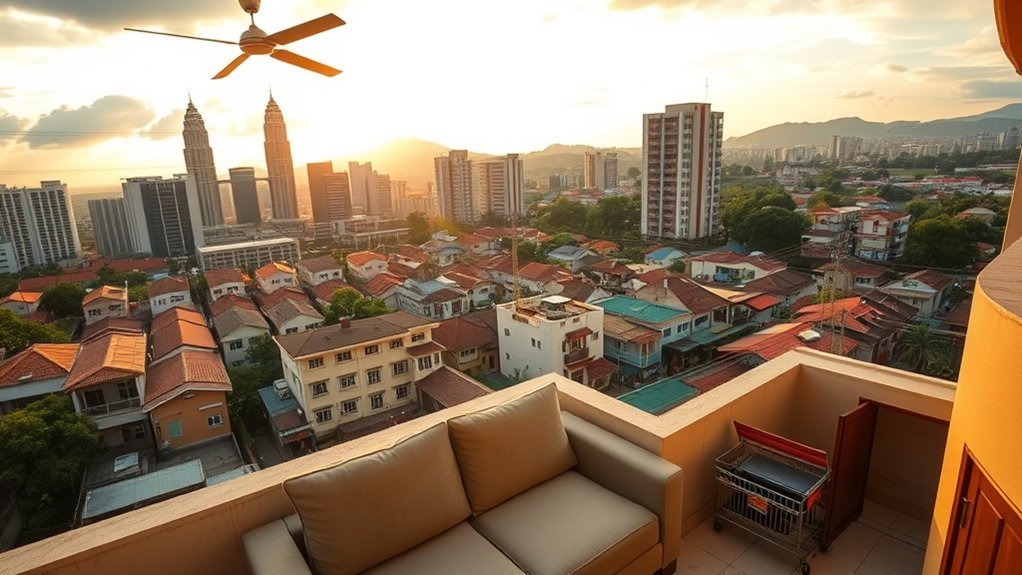
Although Kuala Lumpur commands the highest rents, you’ll see clear regional splits: two-bedroom apartments in KL typically run $700–$1,500 while comparable units in smaller towns fall to $400–$800, and Penang sits between those extremes at $800–$1,200.
You’ll find that city center premiums are measurable: a 900-square-foot apartment in KL’s city center can cost $380–$470 per month in some listings, while other central three-bedroom rentals push $760–$930, signaling strong urban demand.
When comparing housing costs and rental costs, factor in recurring utilities and Internet: utilities for two people average $50–$100 monthly and Internet adds about $24–$29.
That means your effective cost of living for accommodation can vary widely—lower base rent in smaller towns offsets fewer conveniences, while Penang offers midrange pricing with cultural amenities.
Use these figures to benchmark options, estimate total monthly outlays, and prioritize location versus monthly service costs.
Food, Dining and Daily Living Expenses
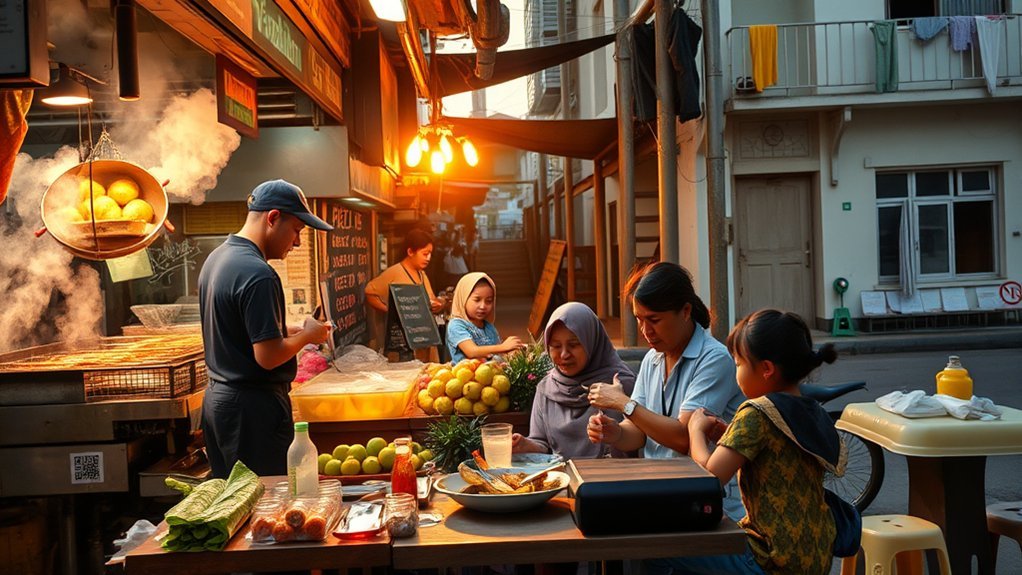
After you’ve budgeted for rent and utilities, food and daily living become the next major variable in your monthly outlay. You’ll find Malaysia’s low cost of living obvious in food and dining: a local meal runs about $2 while whole steamed fish can be $10. Upscale cafés charge roughly $3.50 for coffee versus $0.50 at local spots, so your choices change the groceries vs. dining split in your monthly budget.
| Item | Typical Cost | Impact on Budget |
|---|---|---|
| Local meal | $2 | Low per-meal expense |
| Grocery (couple/month) | $200–$400 | Main recurring cost |
| Utilities (household/month) | $50–$100 | Predictable overhead |
Analytically, a couple’s $2,500 monthly budget comfortably covers rent, groceries, utilities, and basic healthcare. You can reduce daily living expenses by favoring hawker stalls and markets; eating at cafés and buying imported goods raises costs. This comparative, data-driven view helps you optimize affordability without sacrificing quality.
Transportation and Local Travel Costs
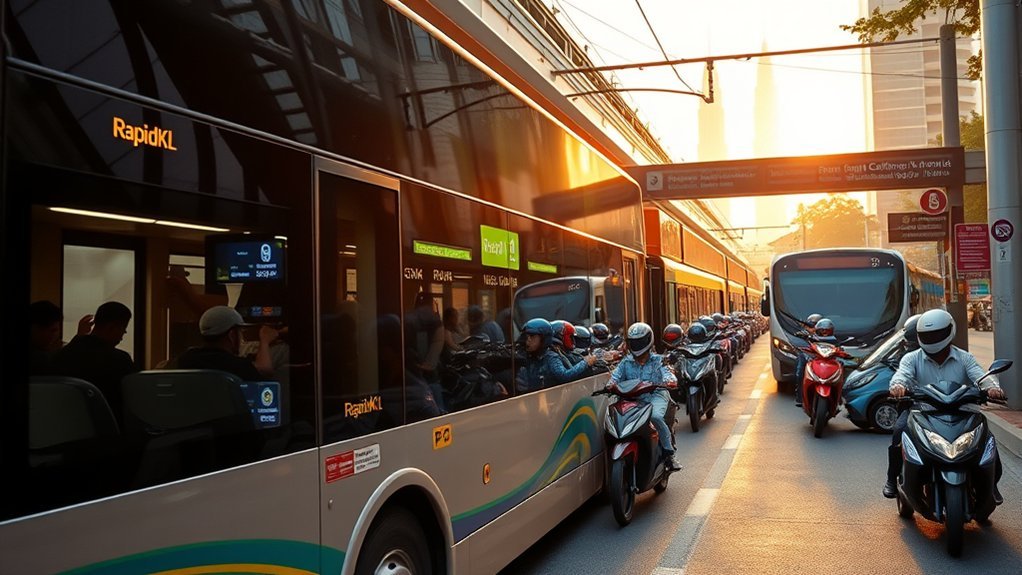
When you compare options side‑by‑side, Malaysia’s transport costs look especially favorable: monthly public-transit passes typically run $20–$25, gasoline averages about $2 per gallon, and ride-hailing via Grab gives on-demand convenience without the high fares seen in Western cities.
You’ll find public transport affordable across cities, so monthly passes cut commuting costs dramatically compared with owning. If you value flexibility, the Grab app covers last-mile trips and food delivery at low prices, often undercutting short taxi fares.
Buying is economical: small cars like a Perodua Axia can cost from $6,000 and scooters from around $2,000; the second-hand market keeps vehicle options cheap and turnover high for expats.
Buying is economical: small cars from about $6,000 and scooters near $2,000, with a lively second-hand market for expats
Compare total ownership (fuel, maintenance, insurance) against recurring transit fees — for many, local travel mixes public transport and occasional Grab rides to minimize cost and maximize convenience. This data-driven view helps you choose the most cost-effective transportation strategy.
Healthcare, Insurance and Medical Expenses
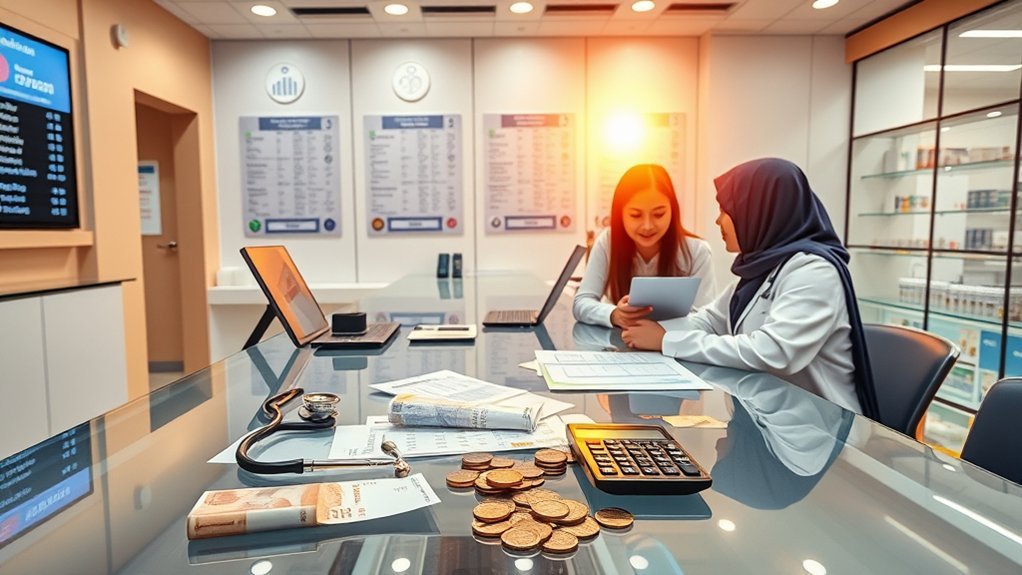
Because Malaysia keeps out-of-pocket care inexpensive, many expats weigh paying per visit against buying insurance: routine consultations typically cost $20–$50, while private insurance runs about $50–$150 monthly, so you can model break-even points based on your expected usage.
You’ll find a mix of a well-rated public system and a robust private network; Penang alone has seven hospitals with English-speaking staff trained in the UK, U.S., or Australia, which matters if you prioritize international standards.
- Compare average visit costs ($20–$50) to monthly premiums ($50–$150) to estimate annual medical expenses.
- Factor quality: private insurance grants faster access and private rooms, while the public system offers highly affordable baseline care.
- For low cost of living calculations, include likely specialist visits, tests, and occasional private hospital stays.
- If you’re an expat, decide whether paying per service or buying health insurance better mitigates risk and aligns with your tolerance for out-of-pocket spending.
Savings, Budgeting and Sample Monthly Costs
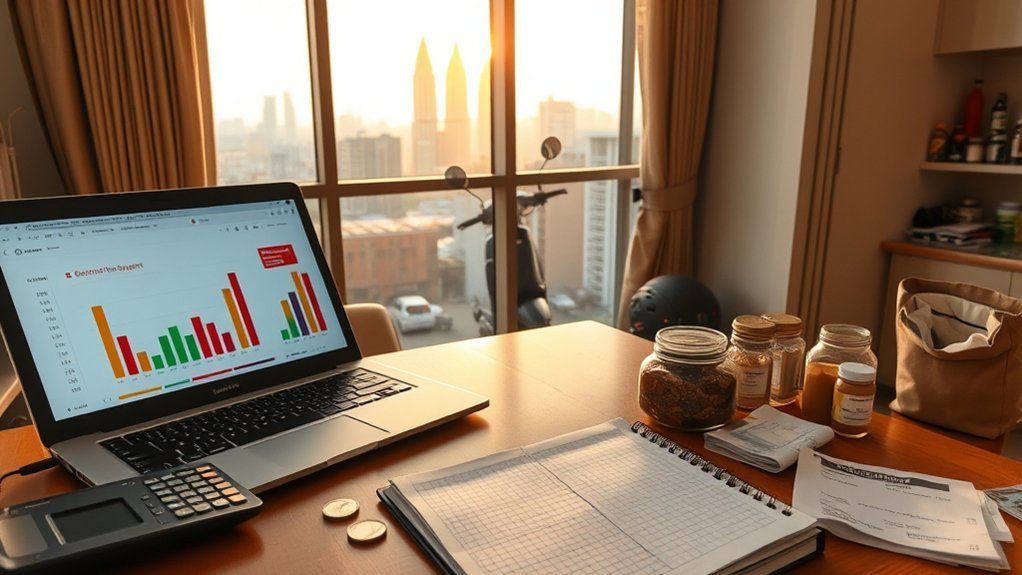
If you want to live comfortably as a couple in Malaysia, plan a monthly budget of about $2,500 and break that down against key line items: rent, groceries, utilities, dining out and discretionary spending.
For two people, rent will typically consume $550–$1,200 depending on city and apartment quality. Groceries range $200–$400 monthly; shopping local markets reduces costs versus supermarkets.
Utilities average about $100, with internet adding $24–$29. Dining out is highly variable: $2 meals at local hawker stalls to $20–$40 at upscale restaurants, letting you tune lifestyle versus savings targets.
If you’re retired, you’ll likely allocate more to healthcare and leisure but can still benefit from Malaysia’s lower cost of living to stretch a fixed budget.
To save, cap dining out, choose mid-range housing, and track recurring utilities. Monthly expenses around $2,500 allow modest saving while maintaining comfortable living standards for two people.
Frequently Asked Questions
Can US Citizens Live in Malaysia?
Yes — you can live in Malaysia via visas like MM2H; evaluate visa requirements, expat communities, cultural differences, healthcare system, job opportunities, language barriers, cost of living, education options, and safety concerns using comparative, data-driven analysis.
How Much Does It Cost to Live in Malaysia in USD?
Want a clear comparison? You’ll see a cost breakdown: living expenses in Malaysia (USD) show lower housing markets, food prices, transportation costs, healthcare fees, entertainment expenses; use currency exchange awareness and budget tips for smart planning.
Is 100 USD a Lot in Malaysia?
No, $100 isn’t a lot in Malaysia; cost comparison shows it covers limited daily expenses. Analyze local prices, food costs, shopping habits, currency exchange, and expatriate experiences for budget tips, lifestyle choices and better planning.
How Much Is Monthly Rent in Malaysia?
You’ll find monthly rent from about $250 to $1,000 depending on city comparison and expat neighborhoods; affordable housing and furnished apartments affect rental prices, utilities costs and lease agreements, while market trends shape living conditions analytically.
Conclusion
In Malaysia, your cost of living can look pleasantly modest or comfortably roomy depending on choices. Housing tends to eat the biggest slice, though smaller cities and shared flats trim that share considerably. Food and transport are generally pocket-friendly versus many Western markets, while private healthcare nudges budgets up unless you lean on public services or insurance. With disciplined saving and smart trade-offs, you’ll stretch your ringgit further and still enjoy a high-quality lifestyle.

